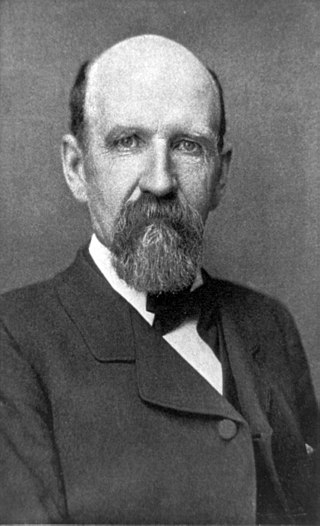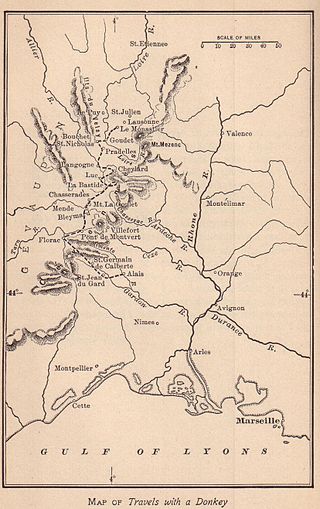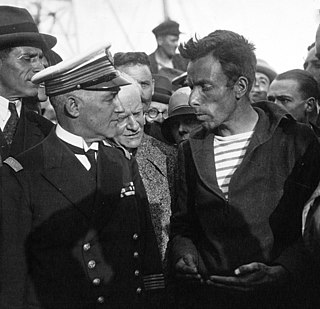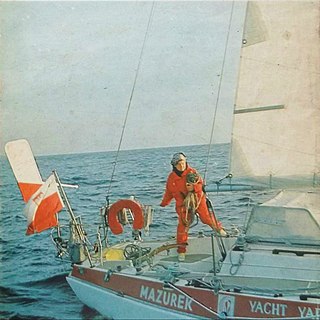Circumnavigation
Aboard his 35-foot (11m) Ericson, MK I, Alberg hull design, full keel, fiberglass boat, entitled Love Song, Teddy circumnavigated the earth, making only 12 stops. On February 24, 1986, after years of preparation, and with only a small pocket of money, Seymour began his sailing trip from his home port of St. Croix. He finished his trip exactly where he had started a year and a half later.
On June 18, 1992, the Bay State Banner wrote the following:
"Lacking corporate sponsors and media coverage, Seymour's 16-month journey was in every bit a solo effort. 'The easy part was sailing around the world,' said the 51-year-old Seymour in a telephone interview with the Banner. 'I've almost lost my life on many occasions.'
'I've been through Vietnam, I've lived in L.A. where the cops hassled me just because I was a black man running down the street in a sweatsuit.'
Born in Yonkers, New York, Seymour attended Central State University in Ohio on a track scholarship. In 1965, Seymour began a seven-year stint in the United States Marine Corps, serving in Vietnam as a captain.
After relocating to the Virgin Islands where he took a job as a primary school teacher, Seymour began planning his journey. It took seven years of paying off $62,000 in bank loans for the purchase and preparation of his 35-foot sailboat before Seymour left Saint Croix, headed for the Panama Canal.
"I worked as a school teacher, a night watchman, a waiter and I chartered my boat," he explained.
Restricted by a $5,200 travel budget, $2,000 of which was on a credit card, Seymour limited his stops to 12 ports including several South Pacific Islands, Australia, South Yemen, Israel and Greece.
Seymour routed his journey through the Mediterranean via the Suez Canal after he was advised by a U.S. Counsel to stay out of Durban, South Africa, where he would have had to stop before passing under the Cape of Good Hope.
Unfortunately, the Mediterranean was in the middle of its worst winter in 42 years. Dogged by gales and a damaged navigation system, Seymour made his longest layover in Pilos, Greece, where he waited over 30 days for the repairs and better weather.
After a two-month 2,000-mile (3,200 km) journey, Seymour passed through the Strait of Gibraltar with $38 worth of food and headed for home.
Although he was certified by sailing authorities as being the 161st person to make the circumnavigation solo, he received little mention in the press outside of a few sailing magazines.

Circumnavigation is the complete navigation around an entire island, continent, or astronomical body. This article focuses on the circumnavigation of Earth.

Joshua Slocum was the first person to sail single-handedly around the world. He was a Nova Scotian-born, naturalised American seaman and adventurer, and a noted writer. In 1900 he wrote a book about his journey, Sailing Alone Around the World, which became an international best-seller. He disappeared in November 1909 while aboard his boat, the Spray.

Sir Francis Charles Chichester KBE was a British businessman, pioneering aviator and solo sailor.
Harry Clifford Pidgeon was an American sailor, a noted photographer, and was the second person to sail single-handedly around the world (1921-1925), 23 years after Joshua Slocum. Pidgeon was the first person to sail a yacht around the world via the Panama Canal and the Cape of Good Hope, the first person to solo-circumnavigate by way of the Panama Canal, and the first person to solo circumnavigate the world twice. On both voyages, he sailed a 34-foot yawl named Islander, which Pidgeon built himself on a beach in Los Angeles. Prior to his first trip, Pidgeon had no sailing experience and was referred to in the press as the "Library Navigator". He accounts for his adventure in his book, Around the World Single-Handed: The Cruise of the "Islander" (1932).

Spray was a 36-foot-9-inch (11.20 m) sailboat weighing nine tons that Joshua Slocum, a 19th-century Canadian-American seaman and author, rebuilt and sailed around the world solo. On the morning of April 24, 1895, the Spray, with Slocum at the helm, departed Boston Harbor. On June 27, 1898, Slocum sailed the Spray into the harbor at Newport, Rhode Island, becoming the first man known to have sailed around the world alone.

Outdoor literature is a literature genre about or involving the outdoors. Outdoor literature encompasses several different subgenres including exploration literature, adventure literature, mountain literature and nature writing. Another subgenre is the guide book, an early example of which was Thomas West's guide to the Lake District published in 1778. The genres can include activities such as exploration, survival, sailing, hiking, mountaineering, whitewater boating, geocaching or kayaking, or writing about nature and the environment. Travel literature is similar to outdoor literature but differs in that it does not always deal with the out-of-doors, but there is a considerable overlap between these genres, in particular with regard to long journeys.

Bernard Moitessier was a French sailor, most notable for his participation in the 1968 Sunday Times Golden Globe Race, the first non-stop, singlehanded, round the world yacht race. With the fastest circumnavigation time towards the end of the race, Moitessier was the likely winner for the fastest voyage, but he elected to continue on to Tahiti and not return to the start line in England, rejecting the idea of the commercialization of long distance sailing. He was a French national born and raised in Vietnam, then part of French Indochina.

Alain Jacques Georges Marie Gerbault was a French Sailor, writer and tennis champion, who made a circumnavigation of the world as a single-handed sailor. He eventually settled in the islands of south Pacific Ocean, where he wrote several books about the islanders' way of life. As a tennis player he was ranked the fifth on the French rankings in 1923.

Krystyna Chojnowska-Liskiewicz was a Polish naval engineer and sailor as well as the first woman to have sailed single-handed around the world, repeating the accomplishment of Joshua Slocum. She sailed from the Canary Islands on 28 March 1976, and returned there on 21 April 1978, completing a circumnavigation of 31,166 nautical miles (57,719 km) in 401 days.
The sport and practice of single-handed sailing or solo sailing is sailing with only one crewmember. The term usually refers to ocean and long-distance sailing and is used in competitive sailing and among Cruisers.

In sailing, the great capes are three major capes of the continents in the Southern Ocean—Africa's Cape of Good Hope, Australia's Cape Leeuwin, and South America's Cape Horn.

The Sunday Times Golden Globe Race was a non-stop, single-handed, round-the-world yacht race, held in 1968–1969, and was the first round-the-world yacht race. The race was controversial due to the failure of most competitors to finish the race and because of the apparent suicide of one entrant; however, it ultimately led to the founding of the BOC Challenge and Vendée Globe round-the-world races, both of which continue to be successful and popular.

Cape Horn is the southernmost headland of the Tierra del Fuego archipelago of southern Chile, and is located on the small Hornos Island. Although not the most southerly point of South America, Cape Horn marks the northern boundary of the Drake Passage and marks where the Atlantic and Pacific Oceans meet.

Sailing Alone Around the World is a sailing memoir by Joshua Slocum in 1900 about his single-handed global circumnavigation aboard the sloop Spray. Slocum was the first person to sail around the world alone. The book was an immediate success and highly influential in inspiring later travelers.
Tania Aebi is an American sailor. She completed a solo circumnavigation of the globe in a 26-foot sailboat between the ages of 18 and 21, finishing it in 1987, making her the first American woman and the youngest person to sail around the world. Her record was not recognized by Guinness, because she sailed through the Panama Canal, which required assistance. She also sailed eighty miles with a friend in the South Pacific. Despite many challenges, Aebi accomplished her goal.

Tilikum was a 38-foot (12 m) dugout canoe that was used in an effort to circumnavigate the globe starting in 1901. The boat was a "Nootkan" (Nuu-chah-nulth) canoe which was already old when she was obtained by captain John Voss in April 1901. The boat was built in the early 19th century as a dugout canoe made from a large red cedar log. Tilikum was purchased for $80 in silver from a native woman in a transference ceremony allegedly sealed by a bottle of rye whiskey - the name Tilikum means "friend" in Chinook jargon. Apparently, John Voss and his companion in this venture, Norman Luxton, were inspired by the voyage of Joshua Slocum, who sailed the 37-foot (11 m) sloop Spray around the world a few years earlier and wrote a best selling book about his adventures.
Edward Conor Marshall O'Brien was an Irish aristocrat and intellectual. His views were republican and nationalist. He was also owner and captain of one of the first boats to sail under the tri-colour of the Irish Free State. He was the first amateur Irish sailor to sail around the world.

Zachary Tristan Sunderland is an American former sailor who was the first person under the age of 18 to sail solo around the world. Sunderland completed his trip after 13 months and 2 days at sea on July 16, 2009 at age 17. The record was previously held by Australian David Dicks, and was surpassed on August 27, 2009 by Michael Perham of England. Sunderland is the youngest American to complete a circumnavigation, surpassing Brian Caldwell, who finished in 1996 at age 20. However, Sunderland's record was not recognized by Guinness World Records, or by the World Sailing Speed Record Council.

Laura Dekker is a New Zealand-born Dutch sailor. In 2009, she announced her plan to become the youngest person to circumnavigate the globe single-handed. A Dutch court stepped in, owing to the objections of the local authorities, and prevented Laura from departing while under shared custody of both her parents. In July 2010, a Dutch family court ended this custody arrangement, and the record-breaking attempt finally began on 21 August 2010. Dekker successfully completed the solo circumnavigation in a 12.4-metre (40 ft) two-masted ketch named Guppy, arriving in Simpson Bay, Sint Maarten, 518 days later at the age of 16.















